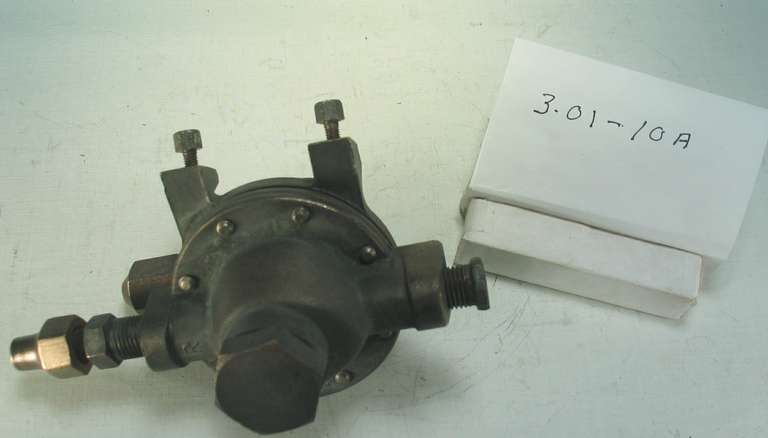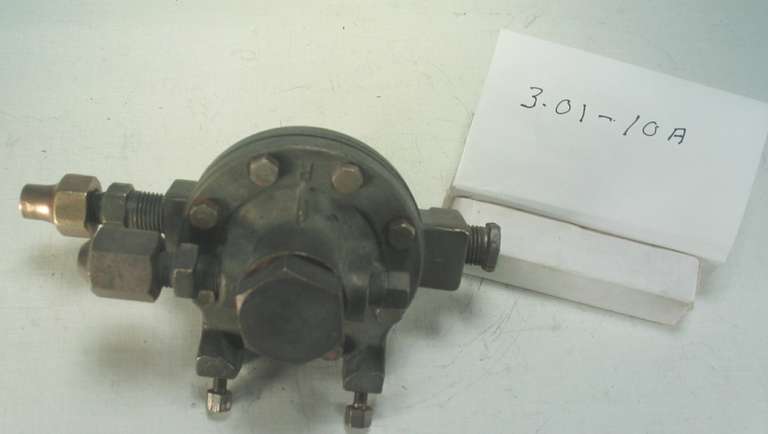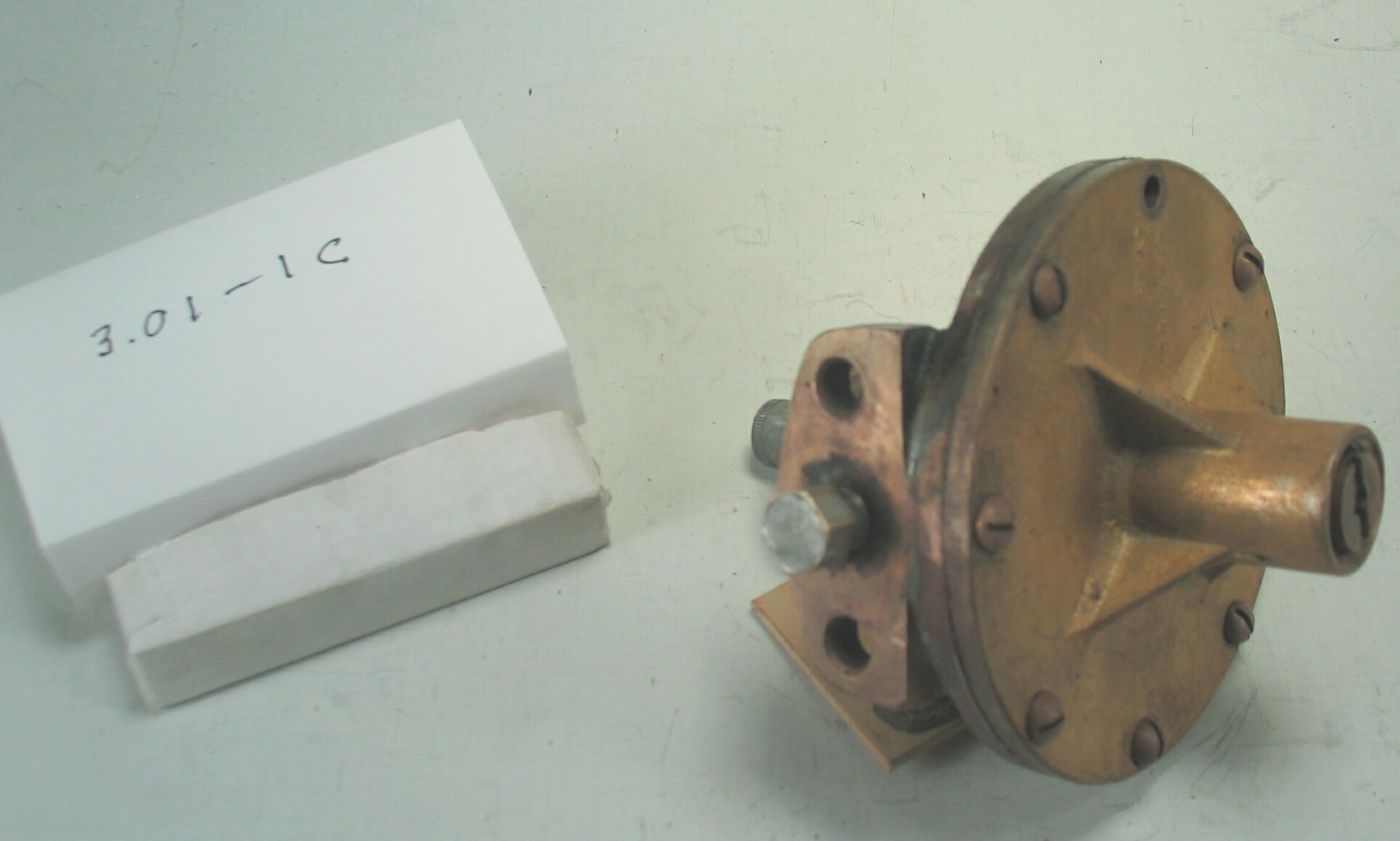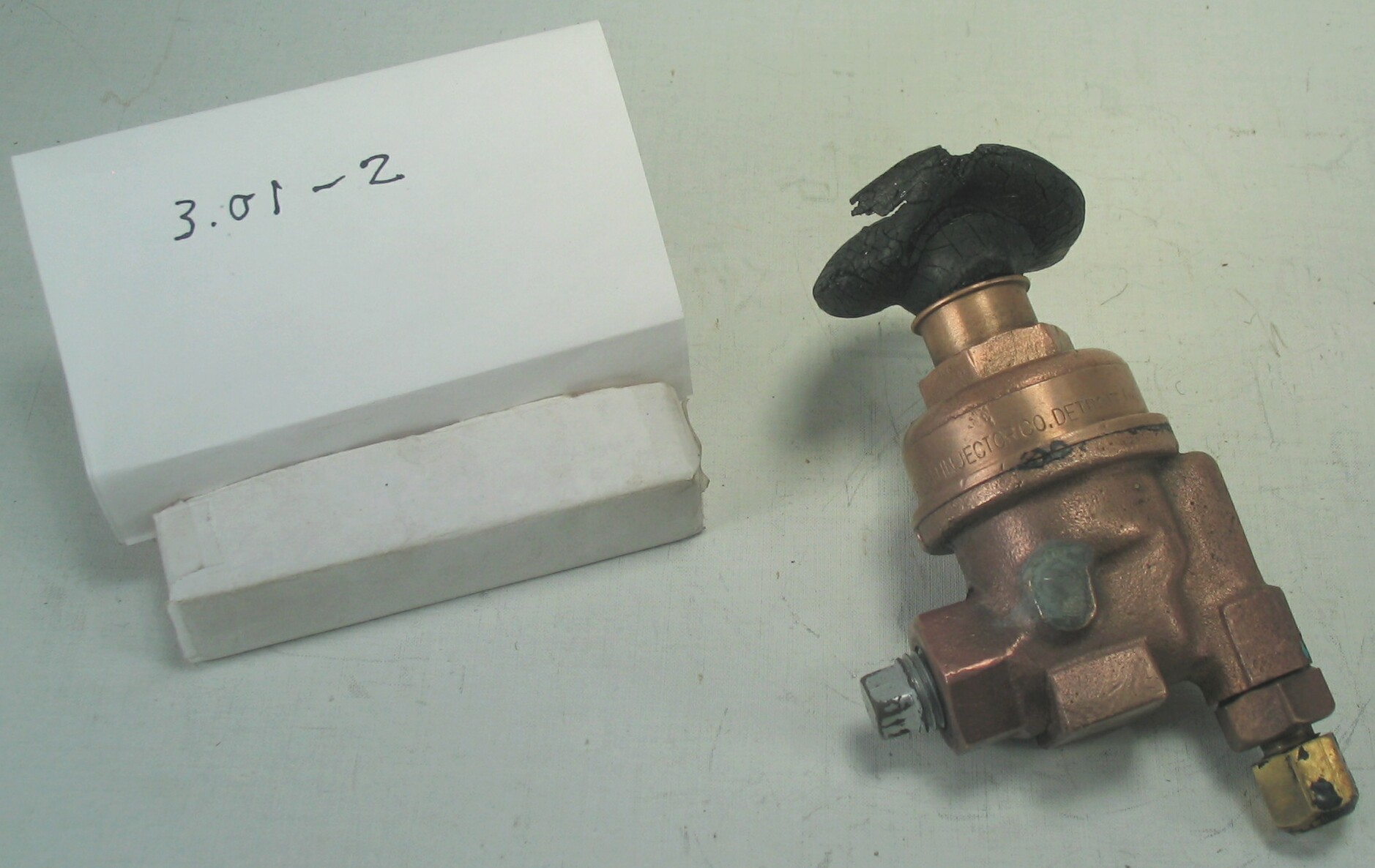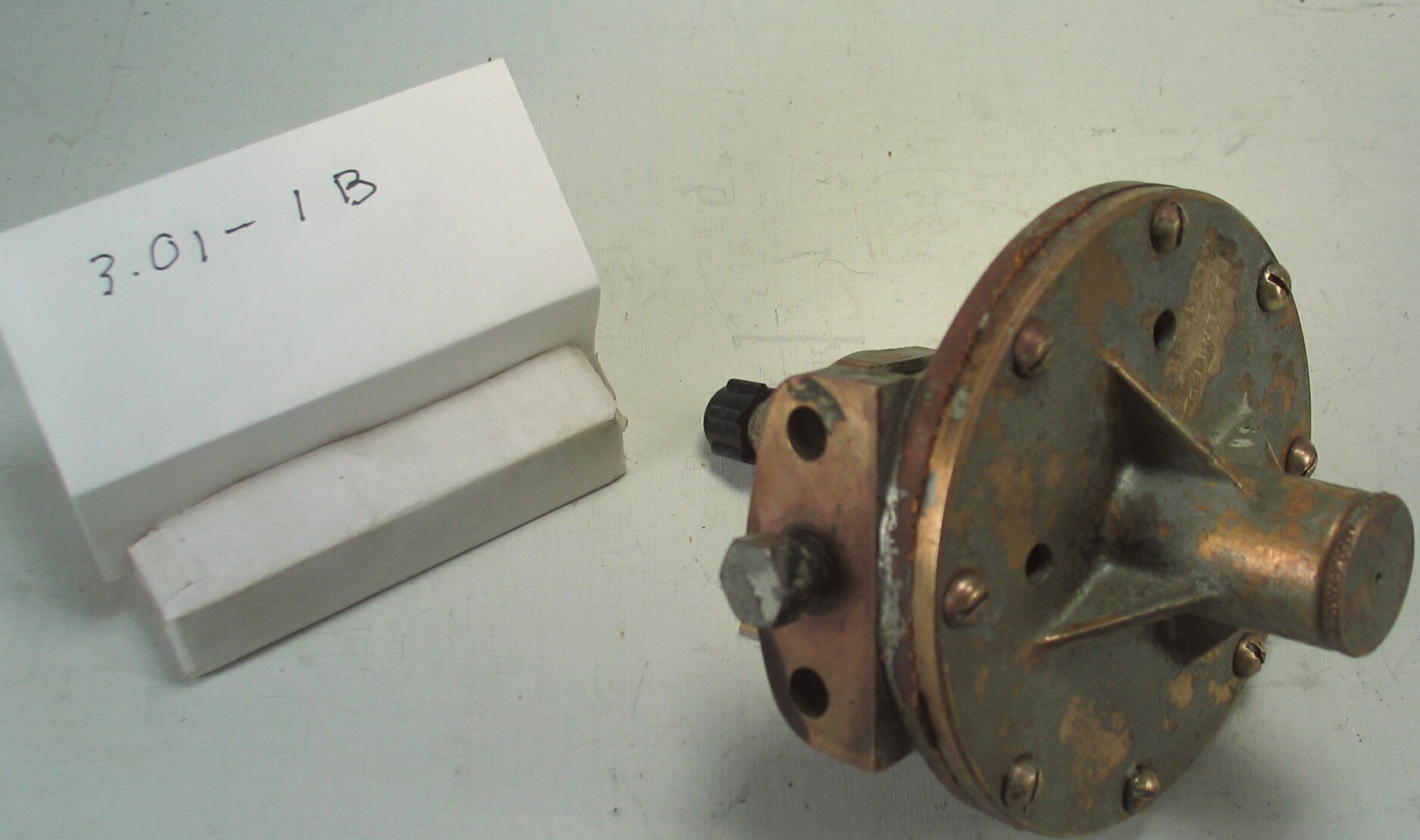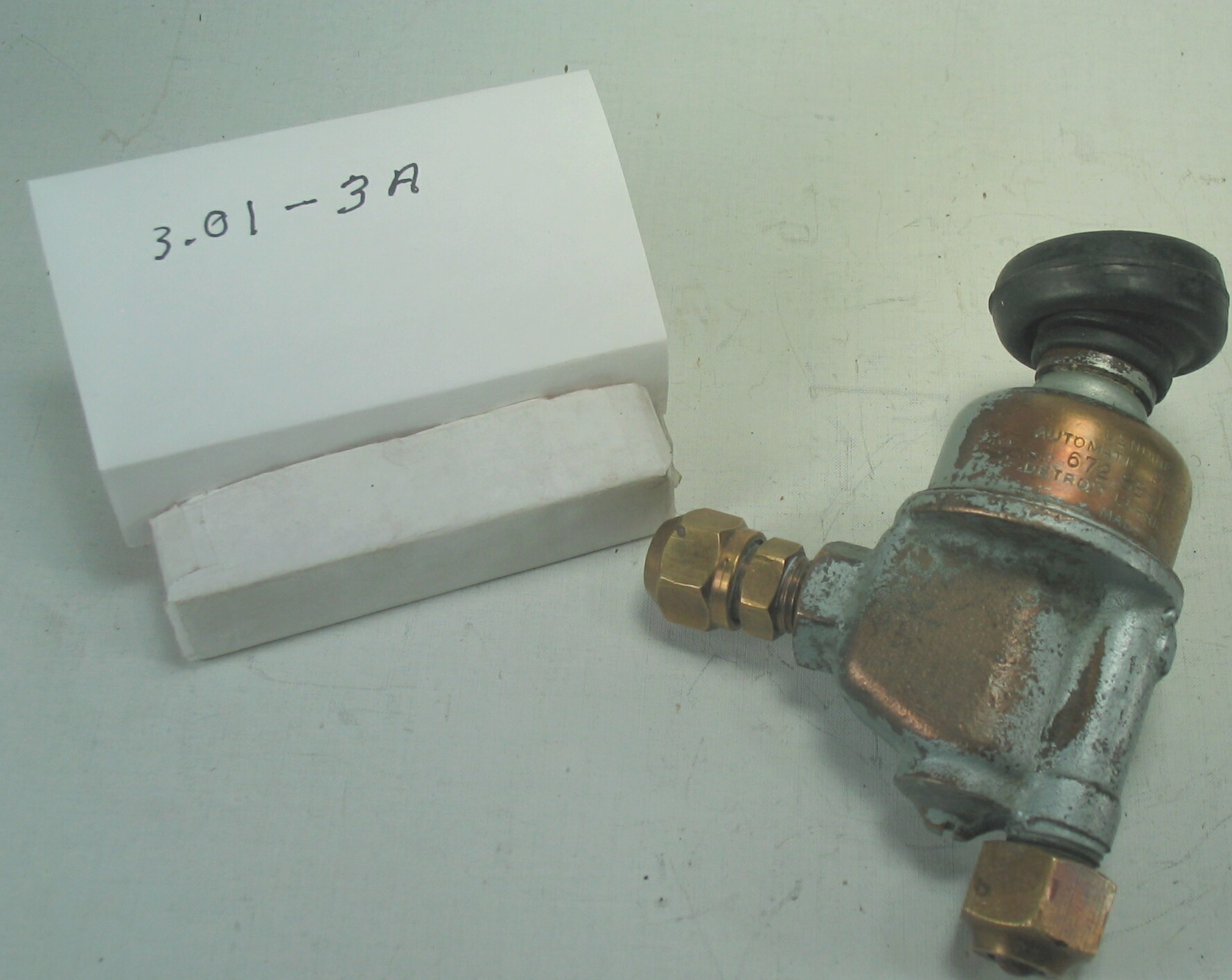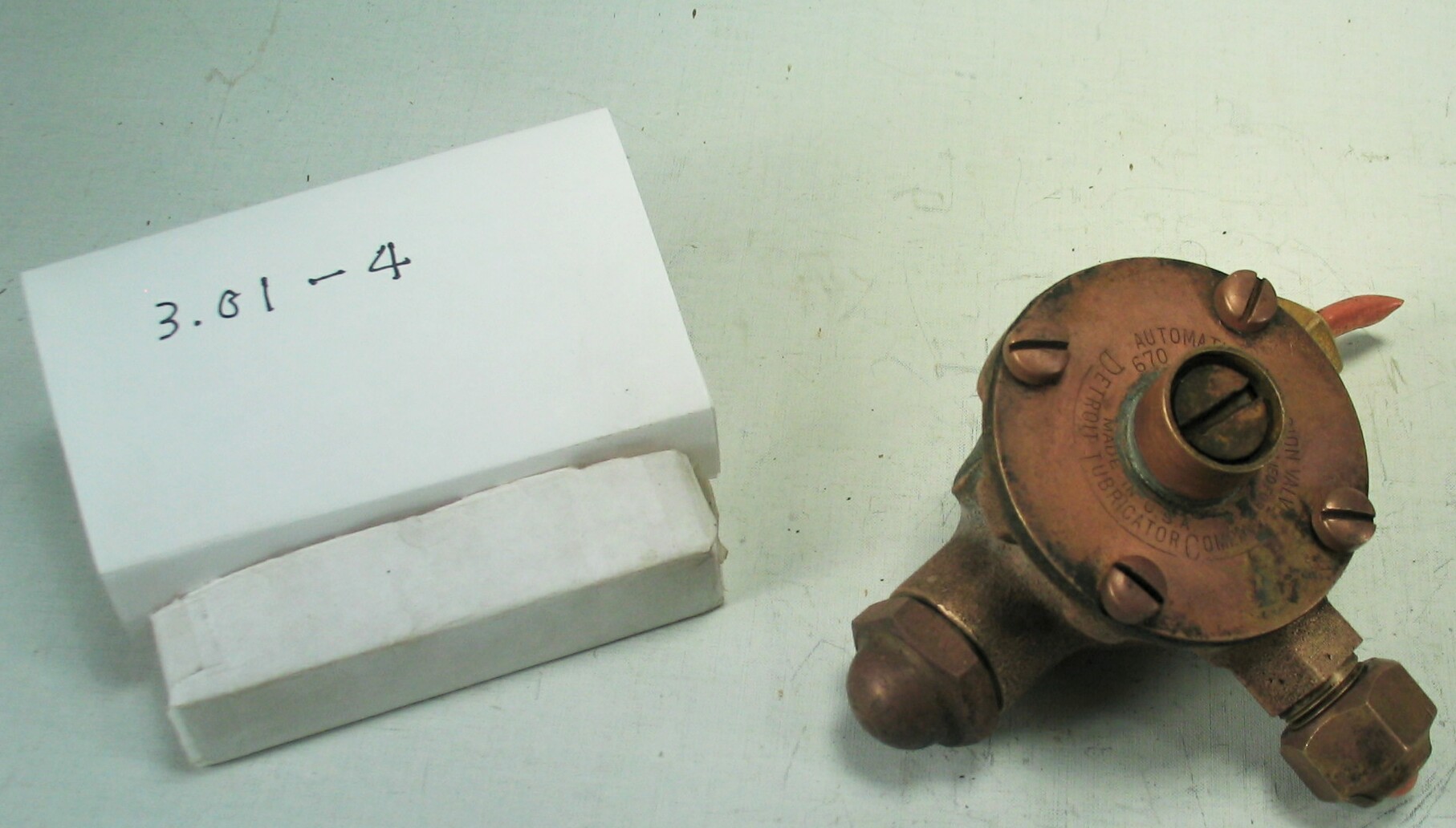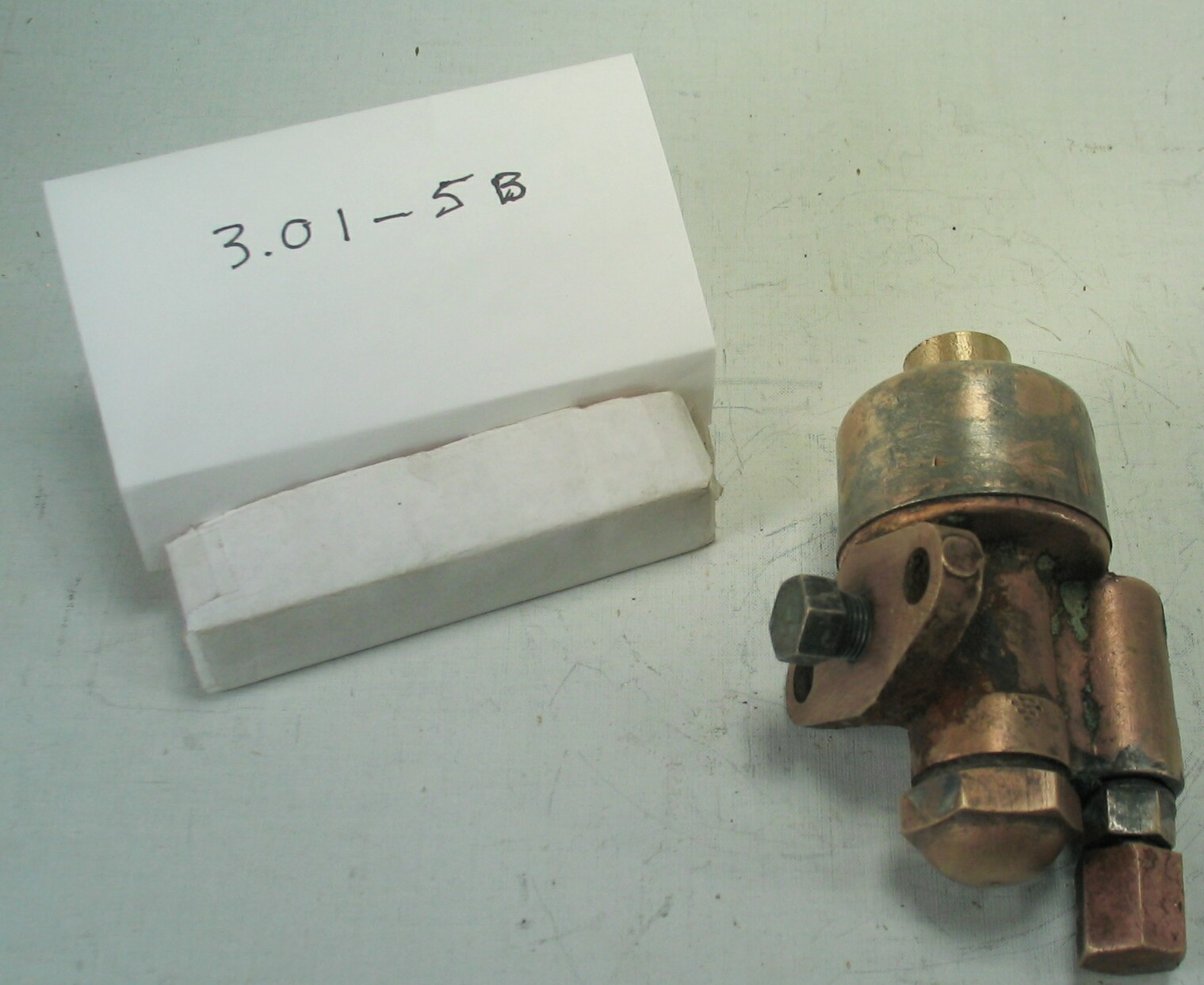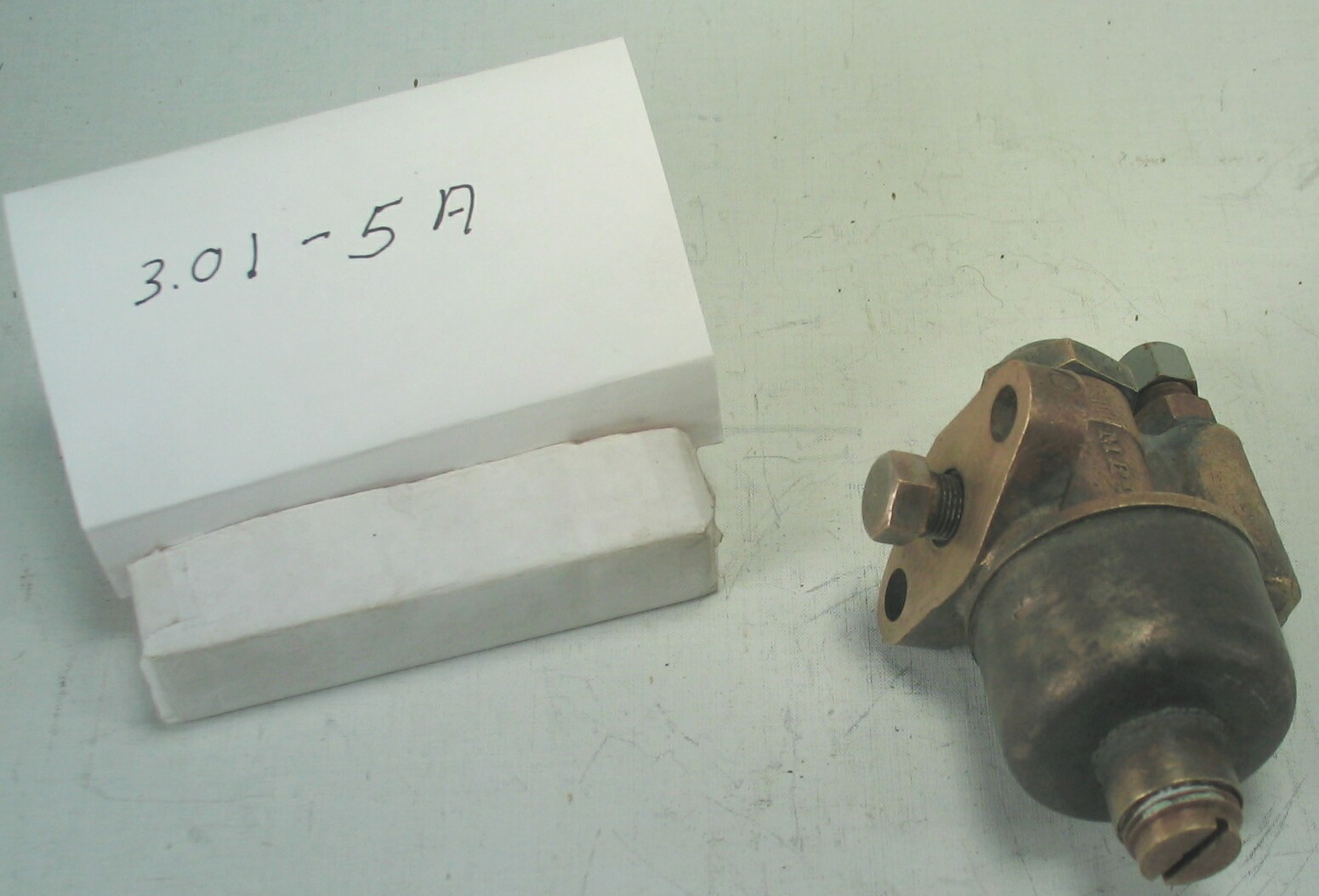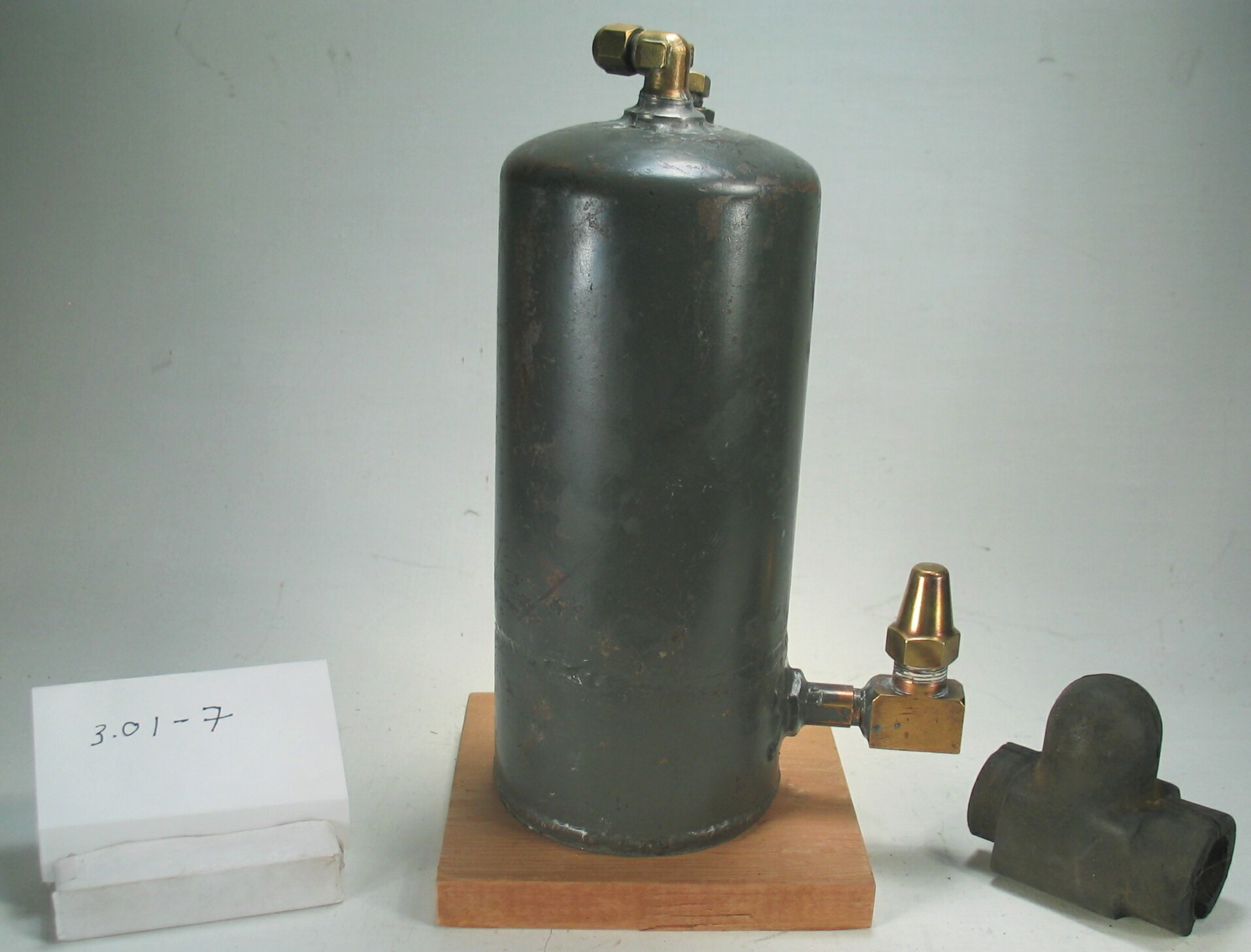3.01-10A: Frigidaire 1929 Early Automatic, Adjustable, Expansion Valve
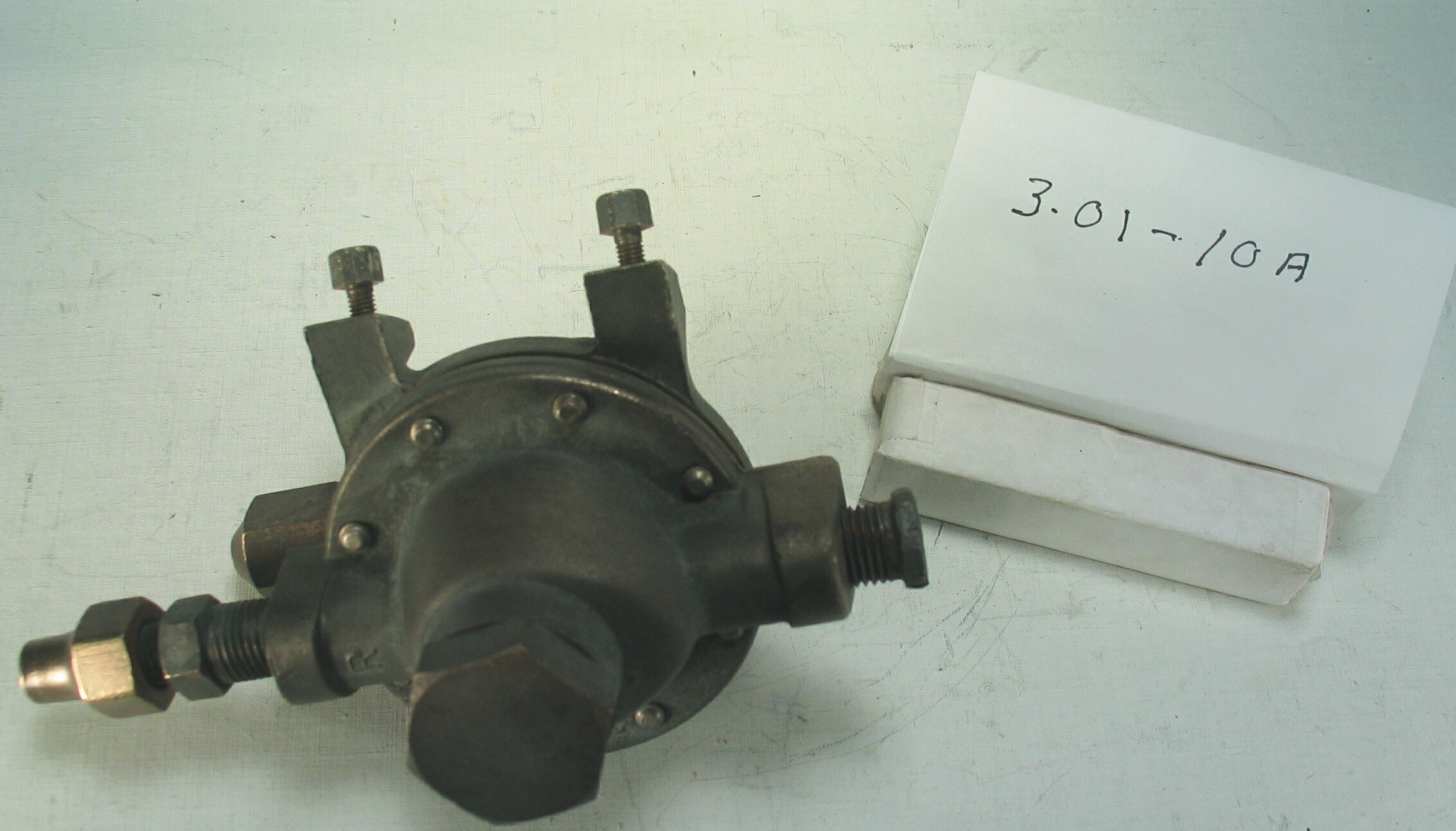
| HHCC Accession No. 2006.055 | HHCC Classification Code: 3.01-10A |
|---|
Description:
An early automatic, adjustable expansion valve, a pioneering contribution by Frigidaire to the embryonic years of the refrigeration industry; housed in a 4 lb. solid cast brass body with integral two point mounting bracket, with galvanised over coat; pressure actuated 2 inch diaphragm; engineered for sulphur dioxide, the then newly developed, low pressure refrigerant of choice; Model N, Frigidaire, circa 1929. [On of a set of two, see #ID 180]
Group:
3.01 Refrigerant Flow Controls - Household
Make:
Frigidaire
Manufacturer:
Frigidaire Corporation
Model:
N
Serial No.:
Size:
5 x 4 x 4 in. h
Weight:
4 lbs.
Circa:
1929
Rating:
Exhibit, education, and research quality, illustrating the engineering design, construction, and operating principles, of one of the first expansion valves produced by Frigidaire - destined to be a name brand manufacturer of refrigeration and air conditioning equipment in Canada throughout much of the remainder of the 20th century.
Patent Date/Number:
Provenance:
From York County (York Region) Ontario, once a rich agricultural hinterlands, attracting early settlement in the last years of the 18th century. Located on the north slopes of the Oak Ridges Moraine, within 20 miles of Toronto, the County would also attract early ex-urban development, to be come a wealthy market place for the emerging household and consumer technologies of the early and mid 20th century.
Accompanied by original shop tag in the handwriting of Howard Oliver, ‘Salvage Frig. X valve, Wm. Knapp’ [Wm, Knapp and son operated a well known paint store on Yonge Street Aurora, and did contract painting through the 1950’s]
This artifact was discovered in the 1950’s in the used stock of T. H. Oliver, Refrigeration and Electric Sales and Service, Aurora, Ontario, an early worker in the field of agricultural, industrial and consumer technology.
Type and Design:
Automatic refrigerant pressure compensated Diaphragm actuated
Construction:
Cast brass body, with heavy galvanized over coat
Material:
Special Features:
Accessories:
Capacities:
Performance Characteristics:
Operation:
Control and Regulation:
Targeted Market Segment:
Consumer Acceptance:
Merchandising:
Market Price:
Technological Significance:
A rare specimen of a self-regulating, spring compensated, automatic expansion valve, one of the earliest in production by Frigidaire, used to maintain cooling units [evaporators], in mechanically cooled refrigerators, at the desired refrigerant pressure. This artifact of history tells the many stories of early adoption of this particular fluid flow technology. After a brief flurry of excitement over the use of costly and delicate float operated devices, as a more efficient means of flow control, industry engineers would return to the automatic expansion valve in the early 30’s. But by then the automatic expansion valve would be a smaller and much more precisely calibrated and efficient device. While the automatic expansion valve was less efficient in its effective use of evaporator surface than high and low side float systems [See HHCC Series 3.01 artifacts], it had the advantage of reliability and price, as well as serviceability. The valve taken out of service in the 1950’s attests to its robust nature, with an operating life of 20 years and more.
Industrial Significance:
Socio-economic Significance:
Socio-cultural Significance:
The socio-cultural significance of the impact of the unobtrusive, automatic expansion valve on life in Canada, throughout the early part of the 20th century, would be hard to over-estimate. It would become the quintessential, automated refrigerant flow regulating device used in homes, farms and commercial refrigeration applications across the country, giving way to other flow control devices, including thermostatic expansion valves and capillary lines, as the century progressed. It was a period in which machinery in the home was often not at all welcome, being viewed with the suspicion that comes with novelty. Machinery belonged on the farm and on the factory floor, but not in the Canadian home. Here it was considered noisy and hazardous, a potential threat to personal and private property. The mere notion of a self regulating, mechanical device that could be trusted to stop and start and self regulate itself reliably, over long periods of time was simply not part of popular experience of Canadians of the time. Thus, in addition to the immense array technical problems which remained to resolved, there was an equally large array of socio- cultural challenges to be over come by manufactures in convincing their public to be early adopters of refrigeration technology in the home - in the face of massive mistrust and apprehension. Conversely, for those that were in a financial postion of enjoying the many benefits of the technology, there were multiple factors tending to attract advocates. Included were: the human need to be seen as an early, recognized leader in adoption, the need for socio-economic status in the community, as well as the allure of new taste sensations, a break with overwhelming, desperate boredom of the daily dietary offerings of the period.
Donor:
G. Leslie Oliver, The T. H. Oliver HVACR Collection
HHCC Storage Location:
Tracking:
Bibliographic References:
Installation and Service Manual, SER,_405, For Products Manufactured Prior to 1937, Frigidaire Division, General Motores Corp. Dayton Ohio
